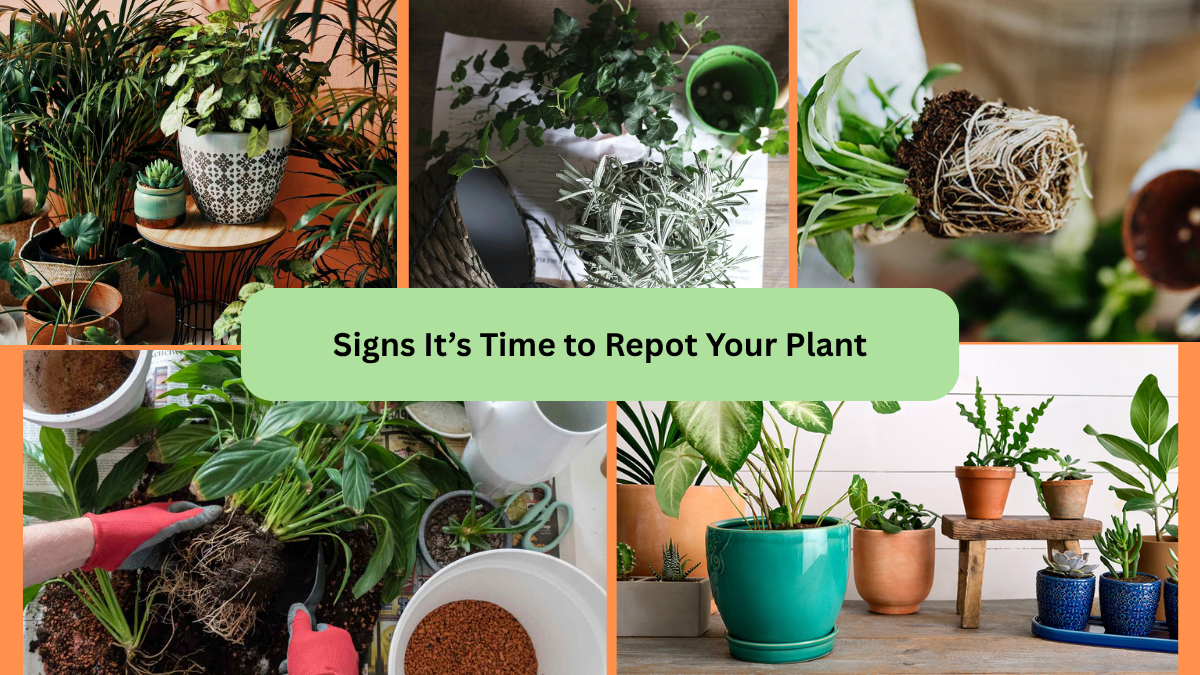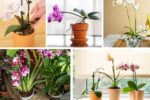Whether you’re a new plant parent or a seasoned indoor gardener, knowing when to repot your plants is one of the most important skills to keep them thriving. While plants don’t need to be repotted too often, ignoring the signs can lead to poor growth, unhealthy roots, and even plant death.
This guide will help you recognize the telltale signs it’s time to repot your plant, why it matters, and how to handle the process safely and confidently.
Why Repotting Matters
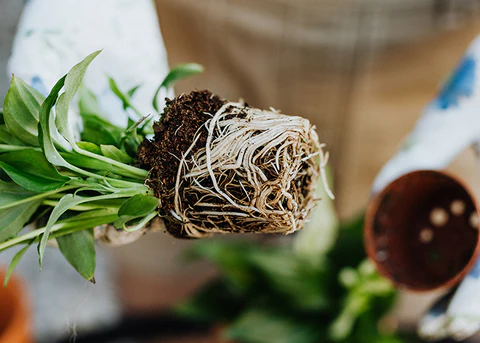
Plants naturally grow and expand their root systems over time. In pots, however, they’re confined to a limited space. When that space becomes too tight, several problems arise:
- Restricted root growth
- Compacted, nutrient-depleted soil
- Poor water retention or drainage
- Susceptibility to pests and diseases
Repotting isn’t just about giving your plant a bigger home — it’s about refreshing its soil, removing dead roots, and providing better conditions for future growth.
How Often Should You Repot Indoor Plants?
As a general guideline:
| Plant Type | Repot Every |
|---|---|
| Fast-growing plants (Pothos, Spider Plant, Tradescantia) | 12–18 months |
| Medium-growing plants (Peace Lily, Rubber Plant) | 1–2 years |
| Slow-growing plants (Snake Plant, ZZ Plant, Cactus) | 2–3 years |
But instead of relying solely on time, it’s better to watch for specific visual and physical signs — which we’ll cover next.
10 Clear Signs It’s Time to Repot Your Plant
Here’s how to tell when your leafy friend is ready for a new home:
1. Roots Growing Out of Drainage Holes
If you notice roots poking through the drainage holes at the bottom of the pot, your plant has outgrown its container. This is one of the most obvious indicators it’s time for an upgrade.
Why it matters:
Roots escaping the pot means there’s no room left for them to expand inside.
2. Roots Circling the Soil Surface
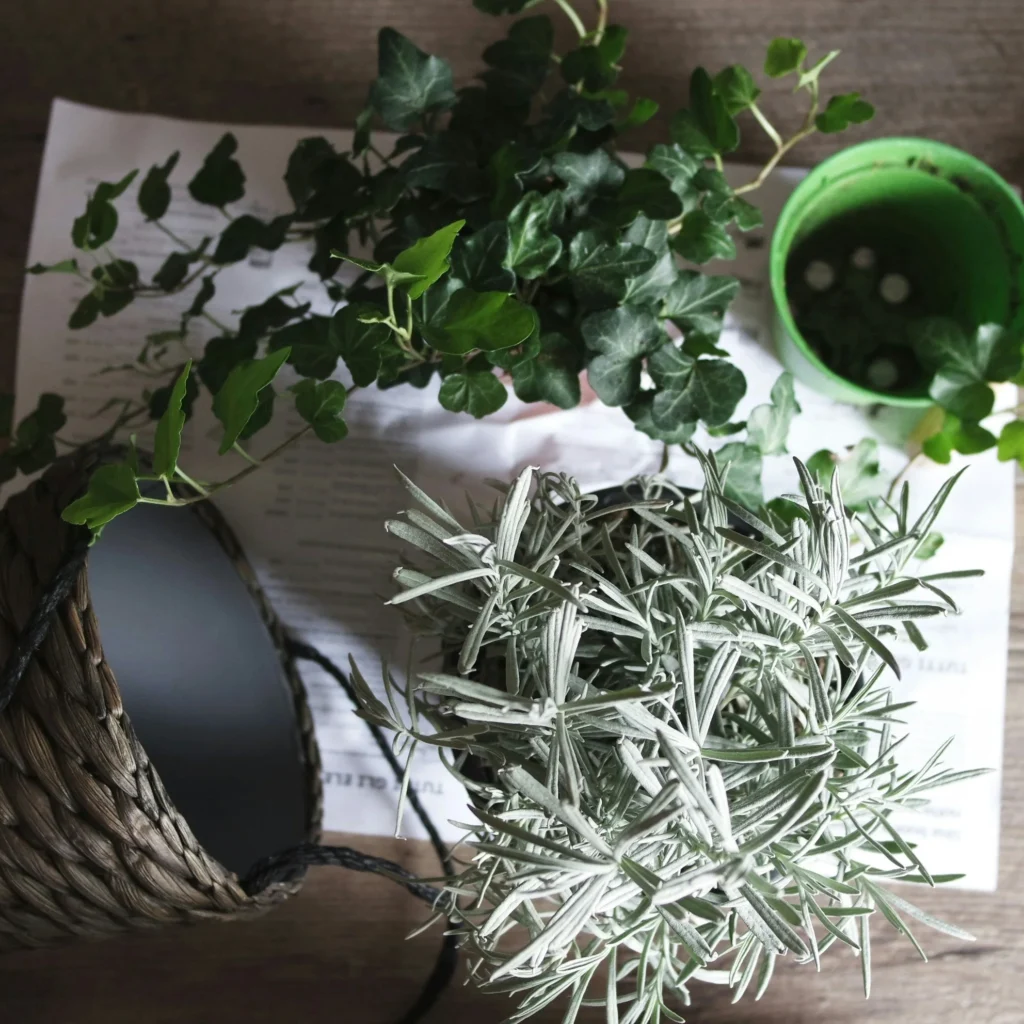
When you remove the plant from its pot and see a dense web of roots circling around the outside or top of the soil, it’s root-bound. This restricts growth and limits the plant’s ability to absorb water and nutrients.
Solution:
Loosen or trim the roots before repotting into a slightly larger pot.
3. Water Drains Too Quickly
If water seems to rush straight through the pot without being absorbed, it could be because the root mass has taken up so much space that there’s barely any soil left to retain moisture.
Why it matters:
This causes inconsistent watering, root stress, and nutrient deficiencies.
4. Plant Growth Has Slowed or Stopped
If a plant that used to grow rapidly seems stunted or barely produces new leaves despite good light and watering, it might be suffering from cramped roots and depleted soil.
Important:
Ensure this isn’t caused by pests or environmental changes before deciding to repot.
5. Yellowing or Drooping Leaves
While occasional yellow leaves are normal, widespread yellowing or drooping can signal stress from overcrowded roots or exhausted soil.
Repotting can restore plant health by:
- Refreshing nutrient content
- Improving soil structure
- Giving roots breathing room
6. Soil Appears Depleted or Hard
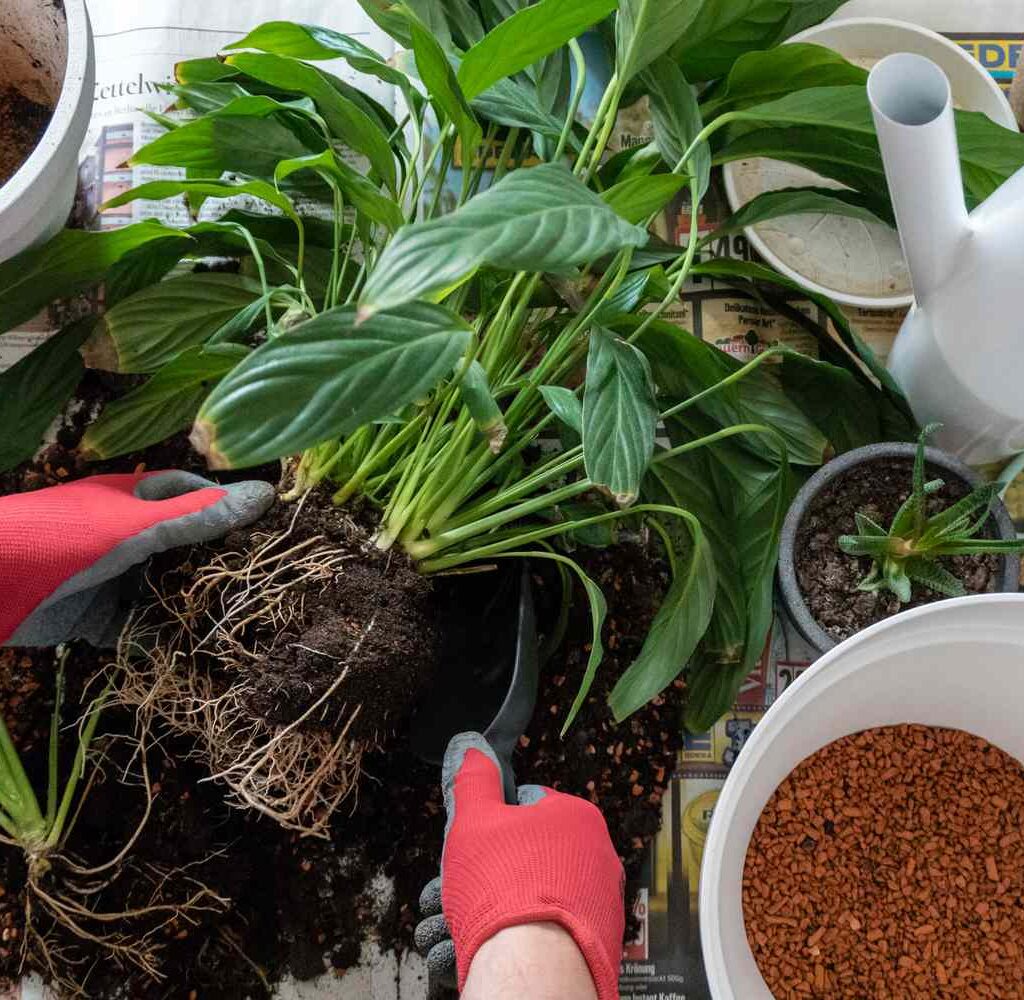
Old soil can become compacted, crusty, or unable to hold water. If your plant’s soil feels dense, dry, or breaks away in clumps, it’s time to replace it with fresh, well-draining potting mix.
Tip:
Look for white salt deposits on the soil surface — another sign of old, depleted soil.
7. Frequent Wilting Despite Regular Watering
If your plant wilts soon after watering — or stays dry despite frequent hydration — it’s likely root-bound. In cramped conditions, water can’t properly reach or be retained by the soil.
Solution:
Repot in fresh soil with a slightly larger container to improve water absorption.
8. Visible Mineral Buildup on Soil or Pot
White crusty deposits on the soil surface or along the pot rim indicate a buildup of minerals from water and fertilizer. Over time, these salts can damage plant roots.
Best fix:
Repot the plant, removing the top layer of affected soil, and wash the pot thoroughly.
9. Top-Heavy or Unstable Growth
If your plant frequently tips over, leans heavily to one side, or appears too big for its current pot, it’s probably time for repotting.
Why it matters:
An undersized pot can’t anchor a tall, heavy plant properly — risking damage to roots and stems.
10. New Shoots or Baby Plants Crowding the Pot
Some plants, like spider plants or succulents, produce offsets (baby plants) that can quickly fill up the pot. When the main plant and its offshoots start competing for space, it’s time to repot or divide them.
Bonus tip:
You can propagate these baby plants into new containers!
When Is the Best Time to Repot?
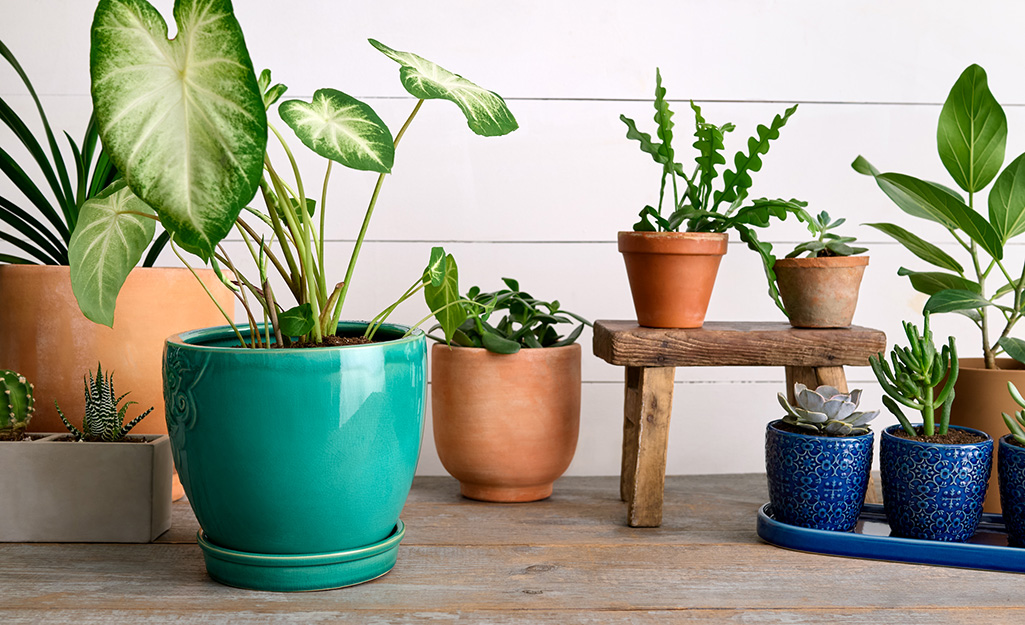
Ideal seasons:
- Spring is the best time since most plants enter their active growing phase.
- Early summer is also suitable for repotting tropical and fast-growing houseplants.
Avoid repotting in:
- Winter, when most plants are dormant and less likely to handle the stress well.
How to Repot Without Stressing Your Plant
Once you notice these signs, follow these simple steps:
- Water the plant a day before to loosen soil.
- Gently remove the plant from its pot.
- Trim or loosen roots if root-bound.
- Place in a slightly larger pot with fresh, well-draining soil.
- Water thoroughly after repotting.
- Keep in a shaded, warm spot for a few days to adjust.
Pro tip: Don’t fertilize immediately after repotting — give your plant 3–4 weeks to settle.
Final Thoughts
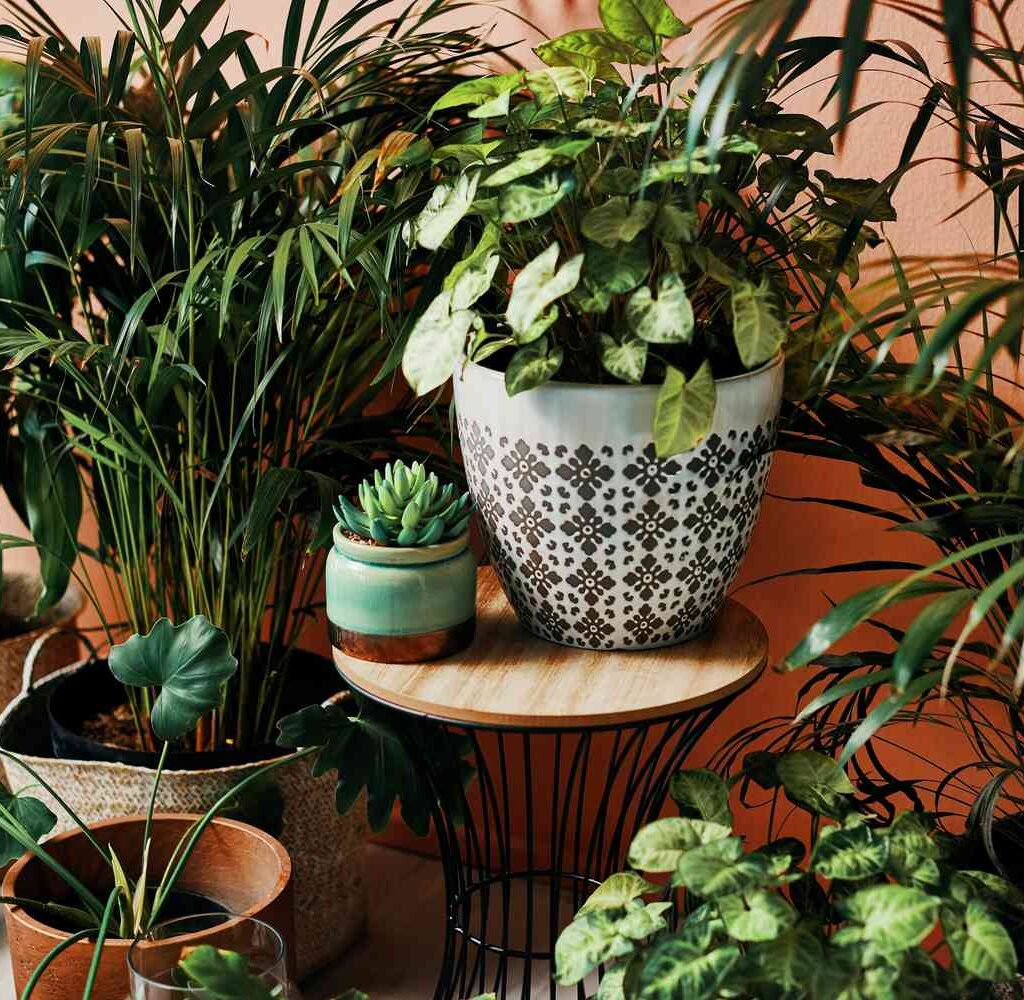
Recognizing the signs it’s time to repot your plant is one of the best ways to keep your indoor greenery healthy and thriving. A little attention to root health, soil quality, and plant behavior ensures your plants continue to grow strong and beautiful.
Remember, not every plant loves frequent repotting, but knowing when to give them a fresh start makes all the difference. Keep an eye out for these subtle cues — and give your plant babies the room they need to flourish!
